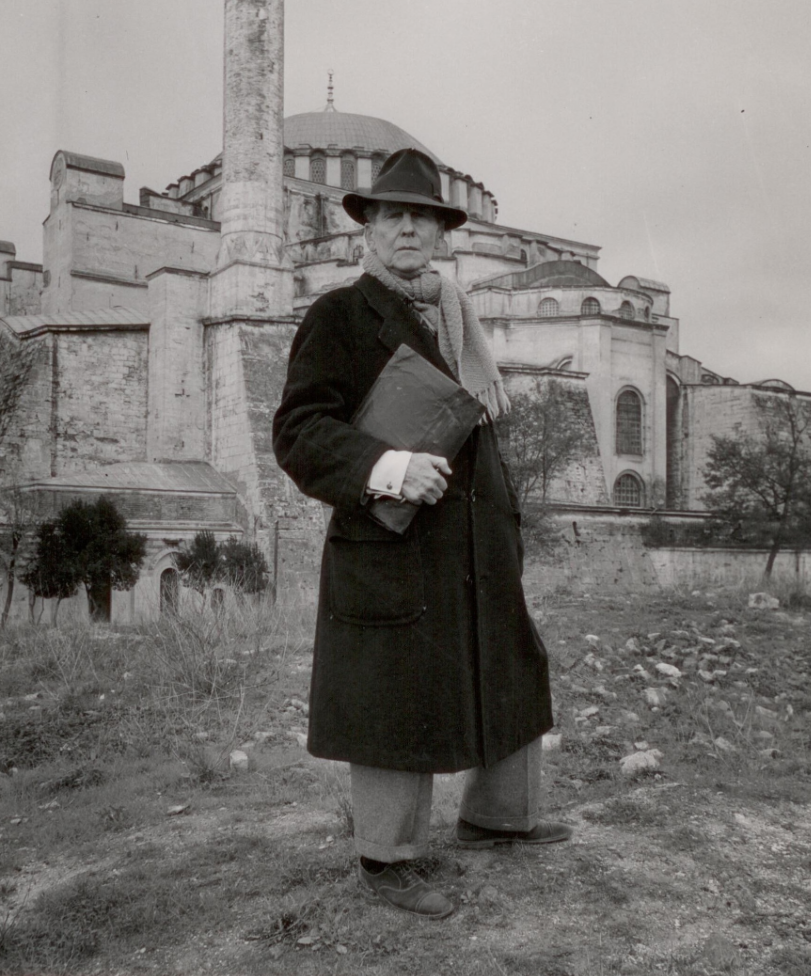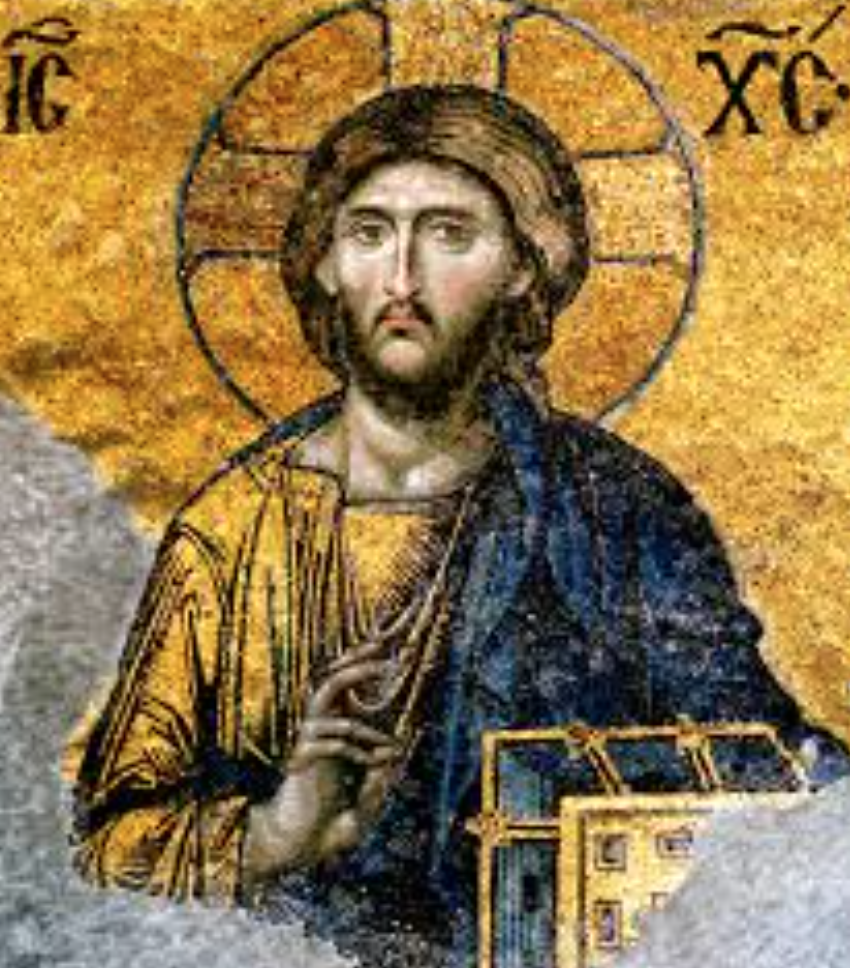Such a beautiful
building with such a lively history. The
Hagia Sophia, pronounced ah-YEE-ah-so-FEE-ah, is much more than an
architectural beauty. It was constructed
from 537-1453 and served as a Greek Orthodox Church. There was an exception during its time as a Orthodox Church when from 1204-1261 it
served as a Roman Catholic Church. Then, from 1453-1931 it served as a mosque.
On February 1, 1935 it was secularized and opened as a museum.
During the Byzantine
period (330-1453) the Hagia Sophia was ornately decorated with mosaics. The mosaics depicted saints and emperors and
empresses, the Virgin Mary, and Jesus. The mosaics have a story to tell, both
those that are visible and those that have disappeared. Many of the earliest
mosaics were destroyed or...
...covered during Iconoclasm. That’s when religious beliefs fluctuate and icons or images are destroyed because of the prevailing thought. The known mosaics in the Hagia Sophia are from the time period of the reestablishment of orthodoxy and the reigns of Basil I and Constantine VII. The story is more complicated, however, as the Hagia Sophia was sacked by Latin Crusaders during the fourth crusade of 1204 and many beautiful mosaics were removed and shipped to Venice. Then, in 1453 Constantinople was taken over by the Ottoman empire and Hagia Sophia was changed into a mosque and the mosaics were covered, whitewashed, or plastered. In 1847 the Fosatti brothers’ were given permission to restore the mosaics. They were uncovered and copied for record, yet they remained covered until 1931 when a restoration and recovery program was begun by Thomas Whittemore, a Harvard Byzantinist and Egyptologist. In 1934, Mustafa Kemal Ataturk ordered that the Hagia Sophia would become a museum and it has remained a museum ever since. I'll have to explore why Ataturk decided to end the plight of Hagia Sophia's conversion from one type of church to another, but thankfully someone realized the historic significance of the incredible mosaics. Some of the mosaics disappeared during various phases of history, including during the earthquake of 1894, but many live on because of many people who cared for Hagia Sophia, even as it changed hands over and over.
...covered during Iconoclasm. That’s when religious beliefs fluctuate and icons or images are destroyed because of the prevailing thought. The known mosaics in the Hagia Sophia are from the time period of the reestablishment of orthodoxy and the reigns of Basil I and Constantine VII. The story is more complicated, however, as the Hagia Sophia was sacked by Latin Crusaders during the fourth crusade of 1204 and many beautiful mosaics were removed and shipped to Venice. Then, in 1453 Constantinople was taken over by the Ottoman empire and Hagia Sophia was changed into a mosque and the mosaics were covered, whitewashed, or plastered. In 1847 the Fosatti brothers’ were given permission to restore the mosaics. They were uncovered and copied for record, yet they remained covered until 1931 when a restoration and recovery program was begun by Thomas Whittemore, a Harvard Byzantinist and Egyptologist. In 1934, Mustafa Kemal Ataturk ordered that the Hagia Sophia would become a museum and it has remained a museum ever since. I'll have to explore why Ataturk decided to end the plight of Hagia Sophia's conversion from one type of church to another, but thankfully someone realized the historic significance of the incredible mosaics. Some of the mosaics disappeared during various phases of history, including during the earthquake of 1894, but many live on because of many people who cared for Hagia Sophia, even as it changed hands over and over.
Whittemore videoed
the restoration done at the Hagia Sophia. The video feed is amazing to
watch. Seeing the devastating condition
the mosaics were in because of being plastered over, covered up, surviving
earthquakes, aging, and so on makes one wonder how herculean the effort had to
have been to restore them. Today they
are magnificent and remind of their original glory. There are several videos of
the Byzantine Institute staff restoring the mosaics available on the Internet, but
here is one that shows them restoring the Archangel and depicts the north
tympanum lunette mosaics representing Saint Ignatios Theophoros who was the
Third Bishop of Antioch and a student of John the Apostle (one of Jesus’ 12
apostles) and the son of Zebedee and Salome and also representing Saint John
Chrysostom who was a Greek Orthodox early church father. Watch this video
filmed around 1931: http://vimeo.com/63658458
 |
| Thomas Whittemore standing outside the Hagia Sophia in the early 1930's. |
 |
| Whittemore's Byzantine Institute staff restoring the mosaics. |
 |
| Above: A mosaic much in need of restoration. Below: Three photos that show the restoration. |



